Today’s Current Affairs: 28th November 2024 for UPSC IAS exams, State PSC exams, SSC CGL, State SSC, RRB, Railways, Banking Exam & IBPS, etc
Table of Contents
Raimona National Park : In News
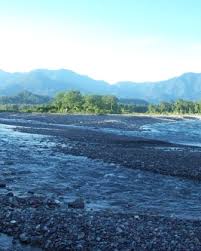
Personnel of the Assam Forest Department and Sashastra Seema Bal (SSB) recently arrested three poachers from the Raimona National Park in Kokrajhar.
- Raimona National Park is located along the Indo-Bhutan border in Kokrajhar district in the Bodoland Territorial Region (BTR), Assam.
- It was declared a national park on June 5, 2021.
- It shares contiguous forest patches of Phibsoo Wildlife Sanctuary and Jigme Singye Wangchuck National Park in Bhutan, creating a trans-boundary conservation landscape of more than 2,400 sq km.
- The Sankosh River runs beside the west of the park and the Saralbhanga River on the eastern part.
- The park is famous for its endemic species, golden langur, which has been named the mascot of the Bodoland region.
- It is also inhabited by various other species, such as elephants, Bengal tiger, wild bison, white-spotted deer, clouded leopard and wild buffalo.
Advertising Standards Council of India:
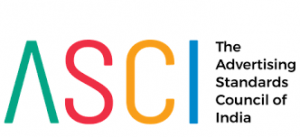
The Advertising Standards Council of India (ASCI) released its Half-Yearly Complaints Report for 2024-25, revealing a high number of misleading and illegal ads, particularly in real estate and offshore betting.
- It is a voluntary self-regulatory organization of the advertising industry in India.
- Established in 1985, ASCI is registered as a non-profit company under Section 25 of the Company Act, 2013.
- ASCI is committed to the cause of self-regulation in advertising, ensuring the protection of the interests of consumers.
- ASCI seeks to ensure that advertisements conform to its Code for Self-Regulation, which requires advertisements to be legal, decent, honest and truthful and not hazardous or harmful while observing fairness in competition.
- ASCI looks into complaints across all media, such as Print, TV, Radio, hoardings, SMS, Emailers, Internet/web-site, product packaging, brochures, promotional material, and point of sale material, etc.
- A Board of Governors includes 16 members drawn from prominent businesses, media agencies, and advertisers, among others.
- The Consumer Complaints Council (CCC) is a body that investigates complaints and decides whether advertisements adhere to the Advertisement Standards Council of India Code.
- A Secretariat, headed by the Secretary General, oversees the day-to-day operations of the organisation.
- While ASCI is not a government body, its role has been widely acknowledged, and in 2006, the Ministry of Information and Broadcasting issued a mandate requiring all TV advertisements in India to follow ASCI’s codes.
- ASCI is a part of the Executive Committee of the International Council on Ad Self-Regulation (ICAS).
Dunlin : Spotted During Kerala Bird Race
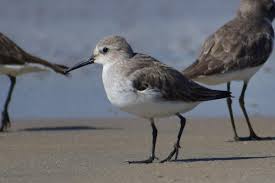
Dunlin was among the 192 avian species spotted during the recently held Kochi edition of the Kerala Bird Race.
- Dunlin is a small shorebird with a droopy bill and is a fully migratory circumpolar breeder.
- Dunlins are medium-sized sandpipers with a slightly down-curved black bill.
- During the summer breeding season, they have a large black belly spot and orange feathers on their back and in winter and nonbreeding season, they are all white with a gray back and head.
- A group of Dunlin is known as a “flight,” “fling,” or “trip.”
- During the breeding season, they live in coastal tundra areas. In the winter, they live along mudflats, estuaries, marshes and coastlines.
- They spend the summer breeding season in the arctic and subarctic regions, and winter along both coasts of the United States and Mexico.
- Insects form the main part of the Dunlin’s diet on the nesting grounds; they eat mollusks, worms, and crustaceans during the winter and on migration.
- Conservation status : IUCN: Near threatened
- It is threatened by habitat loss caused by wetland draining, global warming, and invasive plants, particularly at migration staging and wintering areas.
Black thrips:
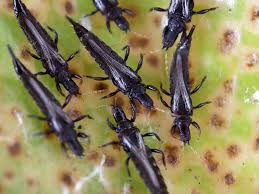
After a year’s gap, the dreaded black thrips infestation has surfaced in the chilli crop once again around Ballari in Karnataka.
- Black thrips is an invasive pest species.
- It was first reported in India in 2015 on Papaya.
- These insects lacerate the tender leaves and flowers before consuming the tissues. Lacerations, especially of the flower, impair fruit formation.
- It is polyphagous, i.e., it can feed on different plant species.
- It feeds on tender flowers, causes large scale shedding of flowers, stunting and malformation of fruits and fruit drop in chilli, leading to severe yield loss.
- In addition to chilli, it damages crops such as cotton, bell pepper, red and black grams, mango, watermelon and others.
- From 2015, the pest has been found feeding on both agriculture, horticulture and ornamental crops and widely distributed across Andhra Pradesh, Assam, Chhattisgarh, Gujarat, Karnataka, Kerala, Maharashtra, Odisha and Tamil Nadu.
Global Matchmaking Platform:
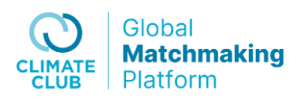
The United Nations Industrial Development Organization (UNIDO) and the Climate Club launched the Global Matchmaking Platform (GMP)
- Global Matchmaking Platform is designed to fast-track the decarbonisation of heavy-emitting industries in emerging and developing economies.
- The idea of the Global Matchmaking Platform was born in December 2023 at the 28th United Nations Climate Change conference (COP28), with the launch of the Climate Club.
- It connects country-specific needs with global technical and financial assistance to reduce emissions in energy and emissions-intensive industrial sectors.
- It connects countries with a network of delivery partners, offering comprehensive technical and financial support for industrial decarbonization efforts.
- These partners assist nations in key areas such as policy development, the transfer of innovative technologies and facilitating investments to drive the transition to zero and low-emission industrial practices including assistance for enhancing the emissions goals.
- This mechanism allows countries to tailor their decarbonization pathways while streamlining access to guidance and resources provided by partner organizations to achieve deep emissions reductions.
- The GMP for industry decarbonisation is being built as a support mechanism of the Climate Club, with the secretariat hosted by the UNIDO.
- Its activities are also supported by the Climate Club interim Secretariat jointly hosted by the Organisation for Economic Co-operation and Development (OECD) and the International Energy Agency (IEA).
Design Law Treaty (DLT):

The member states of the World Intellectual Property Organization (WIPO) including India adopted the Design Law Treaty (DLT) at the Diplomatic Conference to Conclude and Adopt the Design Law Treaty held in Riyadh, Saudi Arabia.
- DLT is proposed as a comprehensive framework to streamline and facilitate the protection of industrial designs worldwide.
- Its objective is to create a predictable and accessible system that eliminates unnecessary bureaucratic hurdles and offers greater ease for designers to protect their intellectual property.
- Key Provisions:
- Streamlining Design Application Procedures:
- Clear Application Requirements: Establishes uniform, clear guidelines for all design applications.
- Flexibility in Representation: Applicants can use various formats (drawings, photos, videos) to represent the design to industrial property offices.
- Multiple Use: Allows multiple designs in one application, preserving the original filing date even if some are not accepted.
- Improving the Filing Process:
- Filing Date Simplicity: Applicants can secure a filing date by submitting essential parts initially, with the complete application processed later.
- Grace Period for Public Disclosure: A six or 12-month grace period protects the novelty of designs disclosed before filing.
- Post-Registration Procedure and Protection:
- Publication Control: Applicants can control publication for six months post-filing, ensuring confidentiality and competitive advantage.
- Relief Measures for Missed Deadlines: Relief will be provided for applicants who miss deadlines, preventing loss of rights.
- Clear Post-Grant Transactions: Post-registration procedures (e.g., transfers, licensing) will be clearly defined for easier management and enforcement.
- Two-Tier Structure: The Treaty will consist of articles (the main provisions of the Treaty) and rules (the regulations governing implementation).
- The Assembly of Contracting Parties can amend the rules to adapt to changes in design law and technology.
Femicides in 2023: Global Estimates of Intimate Partner/Family Member Femicides report
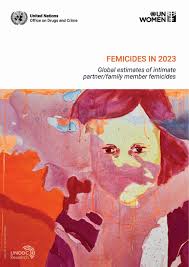
The Femicides in 2023: Global Estimates of Intimate Partner/Family Member Femicides report was on the International Day for the Elimination of Violence against Women (25th November).
- It was released by UN Women and the United Nations Office on Drugs and Crime (UNODC) highlighting the severity of the global crisis of femicide.
- Femicide is defined as an intentional killing with a gender-related motivation.
- It is driven by discrimination against women and girls, unequal power relations, gender stereotypes or harmful social norms.
- It is different from homicide, where the motivation may not be gender-related.
Findings of the Report:
- In 2023, 85,000 women and girls were intentionally killed worldwide, with 60% (approximately 51,100) killed by intimate partners or family members.
- On average, 140 women and girls per day were victims of femicide by intimate partners or close relatives.
- Africa reported the highest number of victims (21,700) and the highest rate of femicide per population (2.9 per 100,000).
- The Americas and Oceania followed, with rates of 1.6 and 1.5 per 100,000, respectively, while Asia and Europe reported significantly lower rates, at 0.8 and 0.6 per 100,000.
- Non-domestic femicides are increasingly recognised. For instance, 5% of femicides in France (2019–2022) and 9% in South Africa (2020–2021) occurred outside domestic settings.
- An estimated 80% of all homicide victims in 2023 were men while 20% were women.
- But, lethal violence impacts women more than men, with nearly 60% of women intentionally killed in 2023 being victims of intimate partner or family member homicide.
Basic Animal Husbandry Statistics 2024:
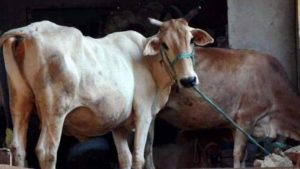
The Ministry of Fisheries, Animal Husbandry & Dairying released the Basic Animal Husbandry Statistics 2024 (BAHS) on the occasion of National Milk Day (26th November).
- It is based on the outcomes of the Integrated Sample Survey (ISS) (March 2023–February 2024) and shows trends in major livestock products like milk, eggs, meat, and wool.
- ISS is an annual, large-scale survey conducted by the Department of Animal Husbandry and Dairying.
- It covers 15% of the villages across the country and estimates livestock numbers and production data for major products, including milk, meat, wool, and eggs.
Key Highlights of the BAHS 2024:
- Milk Production: India’s total milk production for 2023-24 is estimated at 239.30 million tonnes, reflecting a 3.78% increase over 2022-23.
- India is the largest producer of milk in the world. Top 3 producers are Uttar Pradesh, Rajasthan and Madhya Pradesh.
Per Capita Milk Availability increased to 471 grams per day in 2023-24 from 459 grams per day in 2022-23. - Egg Production: Total egg production for 2023-24 is estimated at 142.77 billion numbers, a 3.18% increase from 2022-23.
- India ranked 2nd globally in egg production. Top 3 producers are Andhra Pradesh, Tamil Nadu, and Telangana.
- Meat Production: India’s total meat production for 2023-24 is estimated at 10.25 million tonnes, reflecting a 4.95% growth over 2022-23.
- Top 3 producers are West Bengal, Uttar Pradesh, and Maharashtra.
- Wool Production: India’s total wool production for 2023-24 is estimated at 33.69 million kg, showing a 0.22% increase from the previous year.
- Top 3 producers are Rajasthan, Jammu & Kashmir, and Gujarat.
- Livestock Growth: From 2014-15 to 2022-23, the sector grew at a compound annual growth rate (CAGR) of 7.38% (at constant prices).
- The share of livestock in agriculture Gross Value Added (GVA) increased from 24.32% (2014-15) to 30.38% (2022-23).
Currently, the 21st Livestock Census is underway to provide updated data on cattle populations.
Bioplastics:
Balrampur Chini Mills, Uttar Pradesh one of India’s leading sugar producers, announced a Rs 2,000 crore investment in India’s first bioplastics factory to produce Bioplastics.This project is expected to play a pivotal role in diversifying the sugar industry and contributing to environmental sustainability by introducing biodegradable alternatives to petroleum-based plastics. Bioplastics are derived from renewable organic sources like sugarcane, corn, unlike traditional plastics made from petroleum. They are not always biodegradable or compostable.
Ban on ULFA Under UAPA:
TGhe Ministry of Home Affairs (MHA) extended the ban on the United Liberation Front of Asom (ULFA) for five more years under the Unlawful Activities Prevention Act, 1967 (UAPA).ULFA is an armed militant organisation operating in Assam that aims to secede Assam from India.ULFA was formed in 1979 to seek the “restoration of Assam’s sovereignty” through armed struggle.ULFA was first banned in 1990 and the ban has been renewed periodically, with the last extension in 2019.Section 35 of the UAPA, 1967 empowers the government to declare an organisation as unlawful or an individual as terrorist if it engages in activities promoting terrorism or secession.




